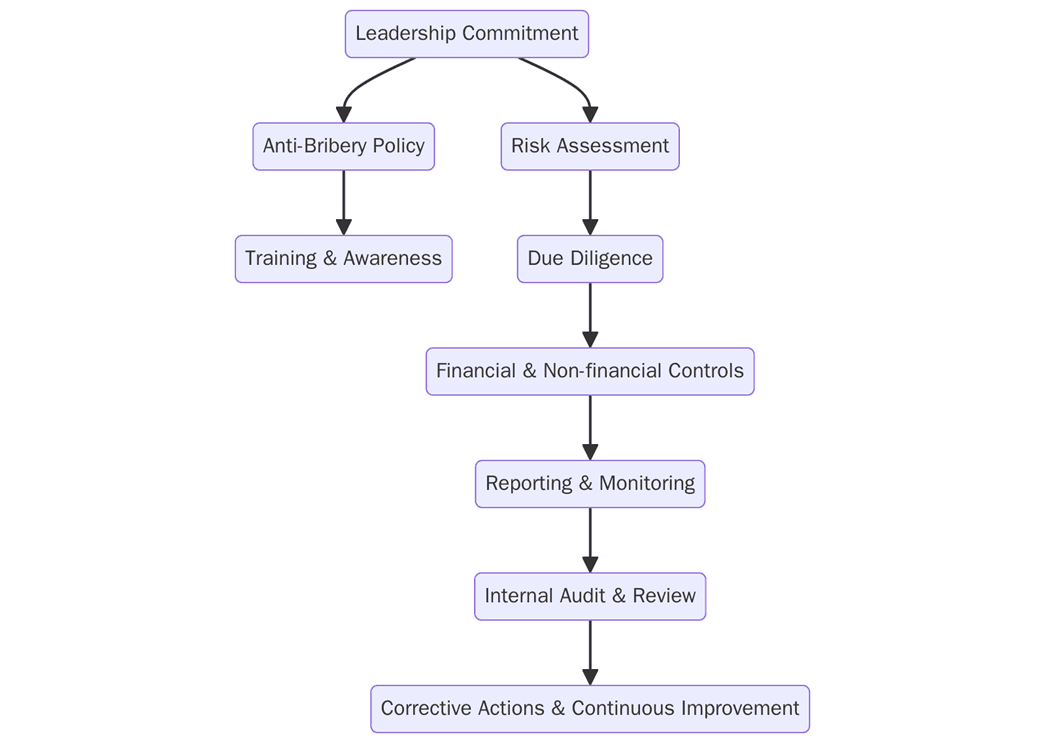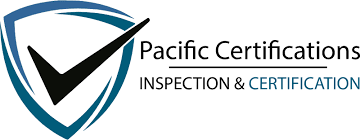ISO 37001 - Anti-Bribery Management Certification for Global Compliance

Bribery risk touches procurement, sales, licensing and public sector interactions across every market. One hidden payment can trigger fines, debarment from tenders and lasting reputational harm. ISO 37001 certification gives institutions a clear, auditable way to prevent, detect and address bribery across their operations and third parties. With pressure from regulators, investors and customers rising, a well-run anti-bribery management system helps institutions protect revenue, win international contracts and build trust without slowing growth.
Let’s connect for a quick 15-minute call with a Pacific Certifications auditor to map out your certification path!
Quick summary
"ISO 37001 certification defines how an institution sets anti-bribery policies, assesses risk, screens third parties and handles investigations with documented controls. It aligns well with procurement and compliance programs, supports due diligence in mergers and supply chains and gives buyers proof that bribery risks are being managed. Institutions track results through KPIs like training completion rate, due diligence turnaround, hotline case closure time and percentage of high-risk suppliers screened before onboarding."
Introduction
Anti-bribery expectations have moved beyond policy statements. Regulators want proof that controls work in practice, customers ask for evidence in tenders and boards seek assurance that growth does not invite misconduct. ISO 37001 certification provides a structured system for governance, risk assessment, training and investigations so gaps are found early and corrected.
The standard integrates with existing quality, security and continuity programs, which means one set of roles and records can support multiple certifications. Most important, it brings third parties into scope through screening, contract clauses and monitoring, since many bribery incidents occur through intermediaries.
ISO 37001 Quick reference table
Area | Key controls | Sample evidence | Useful KPIs and SLAs |
Governance | Policy, scope, roles, code of conduct, conflicts of interest | Approved policy, RACI, conflict declarations, board minutes | Policy review cadence, conflict disclosure rate |
Approvals and segregation | Maker checker, high value approvals, exception gates | Delegation matrix, workflow logs | Approval SLA by tier, segregation exceptions resolved |
Training and awareness | Role based training with testing and refresh cycles | Training plan, attendance, quiz results | Training completion rate, refresh on time rate |
Monitoring and audits | Control testing, internal audits, third party reviews | Test scripts, audit reports, action trackers | Findings closure time, repeat finding rate |
Management review | Review of risks, cases, KPIs, resources and actions | Management review minutes, dashboards | Review cadence, action follow through rate |
Nonconformities and corrective action | Root cause, fixes, verification of closure | CAPA logs, evidence of remediation | CAPA closure time, effectiveness check pass rate |
What are the ISO 37001 certification requirements?
Before listing controls, it helps to frame the aim: ISO 37001 certification requires a system that prevents bribery, detects warning signs and responds with documented action. That system must cover people, processes and third parties with clear accountability. The key ISO 37001 certification requirements include:

- Define the scope and organizational boundaries for the anti-bribery management system across entities, functions and third parties
- Publish policies that prohibit bribery, facilitation payments and improper gifts with clear disciplinary outcomes
- Conduct risk assessments by geography, sector, channel and deal type with documented ratings and owners
- Set due-diligence procedures for agents, suppliers and M&A targets using risk-based depth
- Document controls for gifts and hospitality, political contributions, sponsorships and charitable donations
- Establish approval workflows for high-risk transactions and exceptions with segregation of duties
- Provide evidence records such as screening outputs, contract clauses, training logs and investigation files
- Train staff and relevant third parties with role-based content and testing
- Operate reporting channels and case management with protection against retaliation
- Carry out internal audits and compliance testing with action tracking
- Perform leadership reviews on risk trends, investigations and KPI results
- Correct nonconformities and update controls as risks change
How to prepare for ISO 37001 certification?
Preparation should connect legal, procurement, finance and HR so controls work end to end. Start with a clear risk picture, then align policies, contracts and tools. Effective preparation steps include:
1. Run a gap analysis against ISO 37001 certification and map overlaps with existing compliance programs
2. Update policies and code of conduct to reflect zero tolerance, approvals and reporting paths
3. Standardize third-party due diligence with tiers, questionnaires and watchlist screening
4. Embed clauses on anti-bribery, audit rights and termination in supplier and agent contracts
5. Build training plans for high-risk roles with completion tracking and refresh cycles
6. Stand up a confidential reporting channel and case workflow with SLA targets
7. Pilot internal audits on a region or product line and close findings before the external audit
Certification audit
Certification confirms that anti-bribery controls are documented and operating. Auditors review how risks are assessed, how third parties are screened and how incidents move from intake to closure with evidence. The flow is:
Stage 1 audit: Reviews documented scope, policies, risk assessments, third-party procedures and records.
Stage 2 audit: Evaluates implementation across procurement, sales, finance and investigations with sampling and interviews.
Nonconformities: Must be corrected with documented proof before approval.
Management review: Confirms leadership oversight, resource support and follow-through on actions.
Final certification: Awarded after all gaps are resolved.
Surveillance audits: Conducted annually to verify that controls and monitoring remain effective.
Recertification audits: Required every three years to maintain market validity.
What are the benefits of ISO 37001 certification?
ISO 37001 certification gives buyers and regulators confidence that bribery risks are controlled and issues are handled promptly. Institutions also use KPIs and SLAs to keep the program measurable, for example due diligence turnaround in days or hotline case closure time. The main benefits include:

- Stronger eligibility for public tenders and large enterprise contracts
- Lower risk of fines, debarment and reputational damage
- Consistent third-party onboarding with screening before engagement
- Faster investigations with clear roles, timelines and evidence trails
- Better staff awareness through targeted training and testing
- Measurable outcomes via KPIs such as training completion, case closure time and percentage of high risk vendors screened
Recent trends in 2025
In recent years ISO 37001 certification adoption has grown as institutions face stricter enforcement, supply-chain scrutiny and new disclosure rules. Programs now extend deeper into partner networks with tiered screening and ongoing monitoring rather than one-time checks. Many institutions integrate ISO 37001 with ISO 9001 and ISO/IEC 27001 to reuse governance and audit cycles, and they publish dashboard KPIs like third party screening rate, exception approval age and corrective action closure time. Contracts increasingly include SLAs for due diligence completion before purchase orders and for investigation response time, turning policy into commitments that partners can verify.
Contact us
Pacific Certifications provides accredited ISO 37001 certification services for institutions worldwide. Our audits help you build a working anti-bribery system, strengthen third party controls and meet buyer and regulator expectations.
Request your ISO audit plan and fee estimate. We will help you map Stage-1 and Stage-2 timelines and evidence requirements for your institution. Contact us at [email protected] or visit www.pacificcert.com.
Ready to get ISO 37001 certified?
Contact Pacific Certifications to begin your certification journey today!
Suggested Certifications –
Read more: Pacific Blogs

Author: Alina Ansari
